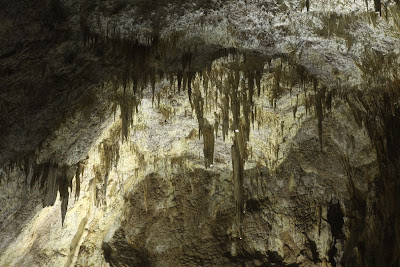Norman Manea (born July 19, 1936) is a Romanian writer and author of short fiction, novels, and essays about the Holocaust, daily life in a communist state, and exile. He is a Francis Flournoy Professor of European Culture and writer in residence at Bard College. He currently lives in the United States.
Norman Manea was born in Suceava, Bukovina, Romania, in 1936. As a child he was deported to a Transnistrian concentration camp in the Ukraine with his family and the entire Jewish population of the region. He returned to Romania with surviving members of his family in 1945. Manea graduated with high honor the "Stephen the Great" high school in his home town, then he studied engineering at the Construction Institute in Bucharest and graduated with master’s degree in hydro-technique in 1959, working afterwards in planning, fieldwork and research.
He published his first work of fiction in 1966, in the avant-garde literary magazine "Povestea Vorbii" (The Story of the Word), an avant-garde and influential magazine that appeared in the early years of cultural “liberalization” in communist Romania and was suppressed after six issues. He became a freelance writer in 1974. Until he was forced into exile (1986) he published in Romania ten volumes of short fiction, essays and novels, among them "Anii de ucenicie ai lui August Prostul" (1979; Engl: The Years of Apprenticeship of Augustus the Fool), "Octombrie, ora opt" (1981; Engl: October, Eight O'Clock, 1992) and "Plicul negru" (1986; Engl: The Black Envelope, 1995).
Critics have compared his complex narrative strategies to Kafka, Joyce and Musil. In 1979 he was awarded the
Literature Prize of the
Bucharest Writers’ Association. Two years later, in an interview with the literary magazine "Familia", he pleaded for a democratic opening up of the country as well for greater integrity of writers, sparking off a hostile official media campaign with anti-Semitic undertones. In 1984 he was awarded the
Literature Prize of the
Romanian Writers’ Union but was then denied the award under pressure from the state's cultural authorities. His work was an irritant to the authorities because of the implied and overt social-political criticism and he faced a lot of trouble with the censors and the official press. At the same time that sustained efforts were made by the cultural authorities to suppress his work, it had the support and praise of the country’s most important literary critics. "Plicul negru", the last novel published in Romania before he decided to leave the country, provoked a sharp and prolonged conflict with the State's censors, which the author went on to describe in his essay "The Censor's Report" in the volume "Despre clovni: dictatorul si artistul" (1997; Engl: On Clowns: The Dictator and the Artist, 1992).
Even before any of his books came out abroad, in 1983
Heinrich Böll urged for his work to be published in the West. The first publication in Germany, "Roboterbiographie und andere Erzählungen" (Engl: Robot-Biography and Other Stories) appeared in 1987, when Manea was a guest of the DAAD. He then went on to the USA on a
Fulbright scholarship and has been living there ever since. After the collapse of the Ceausescu dictatorship, several of his old and new books started to be published in Romania. The publication in the Romanian democratic press of his essays
Happy Guilt, appeared in the US (The New Republic, August 1991) on Mircea Eliade and his former fascist connection provoked a big scandal in the entire Romanian press and hysteria in the nationalistic newspapers. Echoes of this scandal can be still be found in some articles of the current Romanian cultural press. Meantime, in the United States and in the European countries, Norman Manea’s writing was received with great acclaim. Over the past two decades he has been proposed as a candidate for the Nobel Prize for Literature by literary and academic personalities and institutions in the United States, Sweden, Romania, Italy and France. Important contemporary writers expressed admiration towards the author’s literary work and his moral stand before after the collapse of communism: the Nobel laureates Heinrich Boll, Gunther Grass, Octavio Paz, Orhan Pamuk, as well as Philip Roth, Claudio Magris, Antonio Tabucchi, E. M. Cioran, Antonio Munoz Molina, Cynthia Ozick, Louis Begley and others.
In his memoir "Întoarcerea huliganului" (2003; Engl: The Hooligan's Return, 2003), for which he was awarded the
French Prix Medicis for Foreign Literature 2006, Manea chronicled his visit to his native country in the late nineties, his experience of exile and life under two totalitarian systems, fascist and communist. He has received many honours, among them the
MacArthur Fellows Award,
The Guggenheim Grant, the
Literary Lion Medal of the New York National Library, the
National Jewish Book Award and the
International Nonino Prize for Literature. In 2005 Manea was
Holtzbrinck Fellow at the
American Academy in Berlin. Elected member of the Berlin Academy of Art (Germany) 2007 – Finalist, The Latinity Prize by the Association of Latin Countries 2007 – Awarded the Order of Cultural Merit (in rank of Commander) by the President of Romania (Romania) 2008 – Honorary Degree in Literature, University of Bucharest (Romania) 2008. His work has been translated into 15 languages. Norman Manea is a member of the
American PEN Center. He teaches European Literature and is Writer in Residence at Bard College, north of New York City. He lives with his wife in Manhattan.
Info from
here and
here.





























